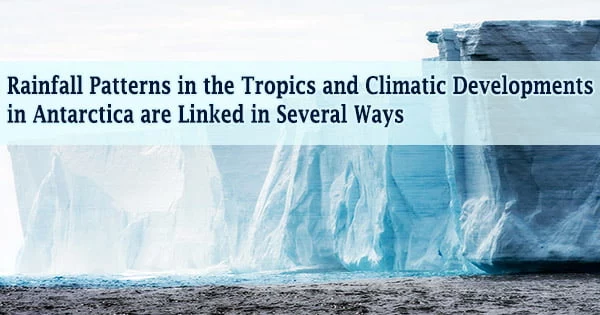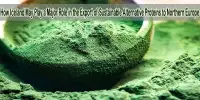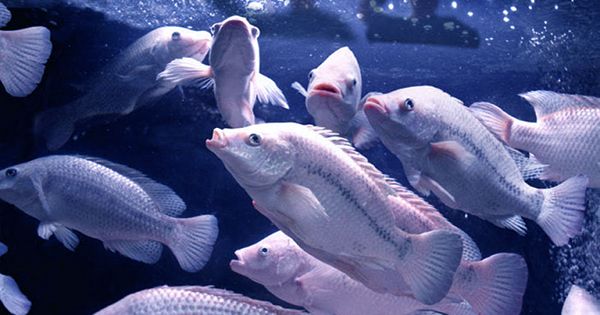Sunlight was formerly assumed to solely break down plastics in the ocean into tiny particles that are chemically identical to the original substance and stay indefinitely. Scientists have recently discovered that sunlight may also chemically convert plastic into a variety of polymer, dissolved, and gas-phased compounds.
This chemical process may now yield tens of thousands of different water-soluble chemicals, or formulae, according to recent research. The breakdown into so many formulae in such a short period of time is at least 10 times more complicated than previously thought.
“The accumulating evidence that photochemical alteration of plastics is a significant transformation process in surface waters calls into question a generally held belief regarding plastic’s environmental durability,” according to the paper, Plastic formulation is an emerging control of its photochemical fate in the ocean, published in Environmental Science & Technology.
It’s astonishing to think that sunlight can break down plastic, which is essentially one compound that typically has some additives mixed in, into tens of thousands of compounds that dissolve in water.
Collin Ward
According to the paper’s lead author, Anna Walsh, a student in the Massachusetts Institute of Technology-Woods Hole Oceanographic Institution (WHOI) Joint Program in Chemical Oceanography, “the scientific community, policymakers, industry, and others assume that sunlight exposure merely physically fragments macroplastics to microplastics, which subsequently persist forever in the environment.”
The current findings, together with previous research, “fundamentally undermine this recommendation, indicating that sunlight not only facilitates physical fragmentation of plastic, but it also chemically transforms it, creating a suite of transformation products that no longer resemble the parent material.”
“It’s astonishing to think that sunlight can break down plastic, which is essentially one compound that typically has some additives mixed in, into tens of thousands of compounds that dissolve in water,” says co-author Collin Ward, assistant scientist in WHOI’s Marine Chemistry and Geochemistry Department.
“We need to be thinking not only about the fate and impacts of the initial plastics that get leaked into the environment but also about the transformation of those materials,” Ward notes. “We don’t really know yet what impacts these products might pose to aquatic ecosystems or to biogeochemical processes such as carbon cycling. While it may appear that plastics degrade faster than predicted is a good thing, it’s unknown how these chemicals will damage the ecosystem.”
The study compared the breakdown of four distinct single-use consumer polyethylene plastic bags from three big stores that produce a lot of plastic bags-Target, CVS, and Walmart to pure polyethylene film under sunshine. Most plastic, including these shop bags, isn’t simply a pure base resin; it’s a complicated mixture of chemical additives designed to make the plastic behave or appear a specific way. Inorganic additives made up nearly a third of the bulk of each of the retailer’s plastic bags.
The National High Magnetic Field Laboratory, which built and constructed a mass spectrometer equipped with a 21 tesla magnet that achieves the best mass resolution and accuracy in the world, studied the organic molecules created by sunshine. The gadget is essentially the world’s most expensive scale, allowing scientists to determine the composition of sunlight-produced compounds.
Researchers discovered that when exposed to sunlight, the four-store bags produced between 5,000 and 15,000 formulations (for the Target bag) whereas the pure polyethylene film produced around 9,000 formulas. In addition, the content of the formulations generated differed between pure and consumer plastics, according to the scientist.
Pure polymers, which are poor proxies for plastic in the marine environment, have been utilized in many earlier investigations of marine plastics. In order to get a full and accurate knowledge of the destiny and repercussions of marine plastic pollution, the study urges researchers to “embrace the various formulations and sunlight-driven changes of plastics in the ocean.”
“If the goal is to understand the fate and impacts of these materials, we need to study plastics that are representative of those that are actually leaked into the environment, as well as study the weathering processes acting on them,” says Ward.
“I am excited about this work because it provides actionable and attainable approaches for making less persistent plastics in the future,” says co-author Christopher Reddy, senior scientist in WHOI’s Marine Chemistry and Geochemistry Department. “The plastics industry may make its products more prone to disintegration after they approach the end of their useful life by simply changing the components in their formulas.”
“There is a lot of room for academia and industry to collaborate on this problem,” adds Ward. “One logical way to solve the problem faster is to work with the people that develop the materials and understand their compositions. Ideally, we can figure out how plastic can be reformulated either to accelerate its degradation into products that are benign or to minimize the production of compounds that are not benign.”
Ward, Reddy, and main author Taylor Nelson, a postdoctoral researcher at WHOI’s Marine Chemistry and Geochemistry Department, previously demonstrated that biofilms forming on plastic in the ocean block light from reaching the surface, potentially slowing plastic decomposition. Nelson’s work, like Walsh’s, found that the plastic’s composition, especially the inclusion of additives, altered the magnitude of the effect.
The Seaver Institute, the Gerstner Family Foundation, WHOI, and the US National Science Foundation all contributed to the research.
















